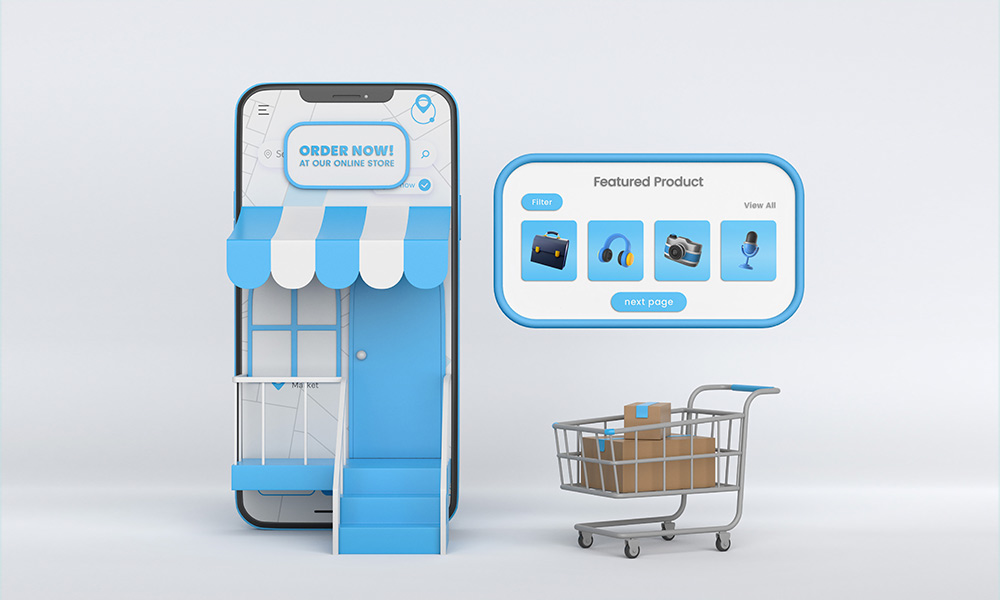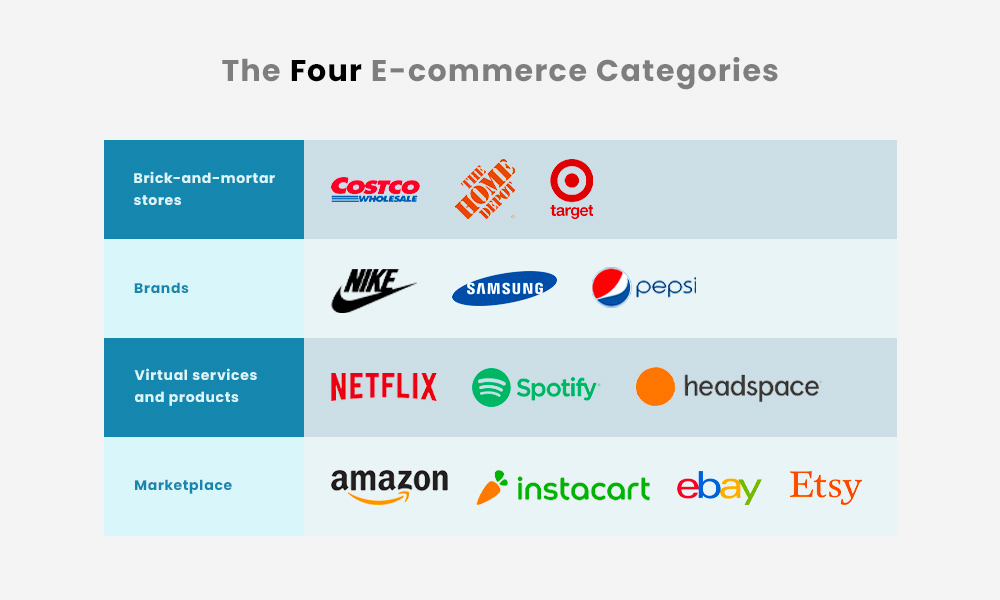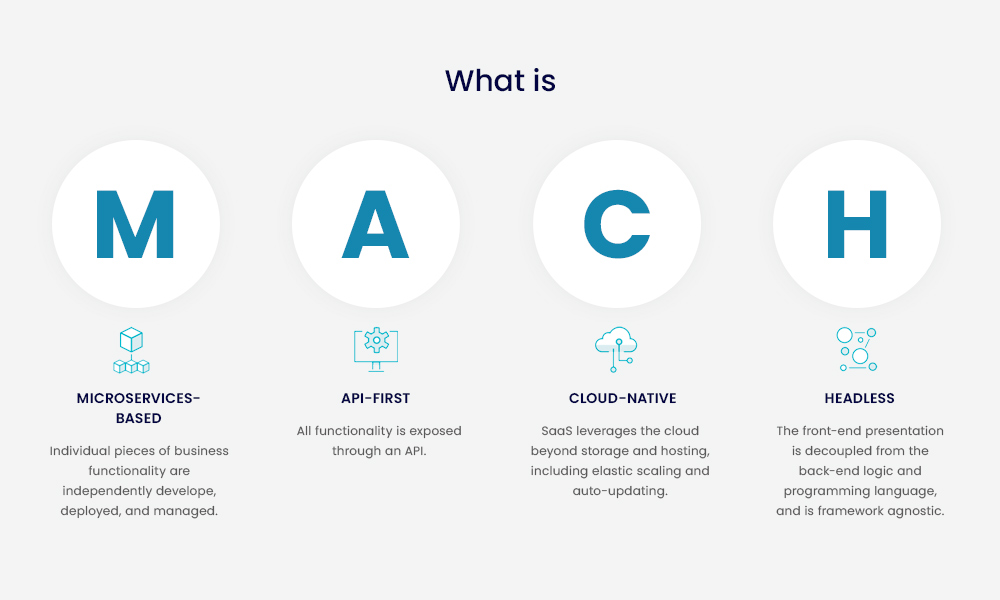E-Commerce Product Management: Your A-Z Guide

Unlike a decade ago, when users had few to no options, shoppers can now spend hours evaluating e-commerce sites and settling on one that offers the greatest pricing with simple returns.
Previously, when the competition was minimal, onboarding clients was difficult; but, in modern times, where acquisition is easier, maintaining a customer is difficult.
If the thorough product information is offered on the platform, 30% of US people are willing to buy from a new online store.
Similarly, 81% of internet shoppers spend more time on Google comparing pricing, reading reviews, and researching products.
Several studies have found that product management is the key to e-commerce success in recent years.
Some of the industry's biggest names, including Amazon, have improved their product management, and it shows.
Users are now given precise product recommendations and are informed about re-purchases before their subscription or product expires.
Similarly, customers have access to features that improve their customer experience yet are the consequence of good product management.
What is Product Management?
Product management can be boiled down to recurring occurrences in layman's terms.
It covers identifying, testing, onboarding, promoting, selling, delivering, and retiring new items promptly.
A product's lifespan ends when demand declines. Post-sales service and return management are also part of the cycle.
Responsibilities of Product Management Executives
• Product identification and market research
• Determine product procurement sources
• Measuring a product's challenges and opportunities
• Market analysis, benchmarking of competitors, and market expectations
• A marketing strategy for promoting a product
• Garnering support from key stakeholders in promoting the product
Product management in e-commerce differs from product management in IT or other traditional enterprises.
Customers who shop online spend a significant amount of time evaluating products and reading user evaluations, putting e-commerce businesses in a unique position.
To ensure that all visits convert, e-commerce players must consider several factors, including:
• Product Management Catalogue Management
• Analytics for E-commerce
• Customer Service
• Seller Assistance

Product management is mainly about assisting clients in finding the proper product as soon as possible for e-commerce players.
Improved product discovery and an ever-increasing quantity of products on the platform may be the best path for e-commerce product management.
This all begs a very interesting question:
What Is An E-commerce Product Manager’s Product?
Although job descriptions differ from company to firm and industry to industry, product managers all have at least a few basic responsibilities. They are in charge of product development at their company. They are solely responsible for the market success of those products.
This role is relatively simple for a company that manufactures high-end kitchen appliances. The product manager will be in charge of the company's kitchen appliance product strategy and development.
However, in the case of an eCommerce company, the function of the product manager is less apparent.
Assume a shop opens an online store for musicians to purchase instruments. This store sells noise-cancelling headphones, recording equipment, and other items. What products does that eCommerce site have to offer? What exactly are they selling?
On the surface, the answer appears to be simple: products for musicians. However, this is only partially correct. Yes, an eCommerce platform is an online resource that assists shoppers and buyers in locating a wide range of products.
However, the corporation is also selling a new type of commodity to the market: a high-quality online shopping experience. An eCommerce product manager is in charge of supervising that experience.
Now, let’s look at the top skills needed for a product manager to shine in this area:

Skills For Any Outstanding E-commerce Product Manager
✧ E-commerce Tech Fluency
Many technological components contribute to the overall user experience of an eCommerce website or app. Here are a couple of such examples:
• Applications for shopping carts, ordering, and payment systems
• Code is created to dynamically create a personalised experience based on the user, device, previous visits, and so on.
• An inventory management system that updates the website with updated inventory information.
• APIs that connect the site to the shipping partners of the company
• The general health and performance of the site: speed, bandwidth, uptime, and so on.
The eCommerce product manager must ensure that all of these details are in place, performing as expected, and working together.
If something goes wrong, the product manager must understand the underlying technical issue in order to fix it promptly.
✧ Sense of Timing
There’s a quote from Prateep Krishnan, Director of Product Management at Xpanse Inc who says this is a must-have skill for eCommerce product managers.
E-commerce, as Prateep stated, is a date and event-driven industry. Product managers must keep this in mind as they develop product roadmaps and delivery schedules.
The last thing an eCommerce company selling floral arrangements wants to find out is that a new feature they just launched is causing the site to go down...on 11.11 or 7.7 or Black Friday or Cyber Monday or…you get our point.
"You must meticulously prepare, implement, and release your important features at least a quarter before [holidays and key events]," he stated. "You also need to keep a close eye on your usage metrics (conversion, session recording, dropouts, etc.) in the weeks preceding those shopping days and be on the lookout for any inexplicable departure."
Prateep's remarkable insight taught us that eCommerce product managers must get a good feel of how long their team's development cycles take. As well as how much lead time to allow for different types of coding work.
This will help them to plan their strategy backwards. In addition to allowing enough time and resources for critical releases in advance of the major shopping days and weeks each year.
eCommerce product managers will want to prominently highlight the important major shopping dates—Day, Valentine's Cyber Monday, and the Holiday Season—when developing their strategic roadmaps.

✧ Prioritisation Skills
Product management in eCommerce necessitates a great deal of juggling. You will always have more work, ideas, and requests on your backlog than you can handle.
When you consider Prateep's point about having to dedicate extra attention to significant shopping days and events, it's easy to see how your time and resources will be even more limited at particular times of the year.
This means you'll have to learn how to prioritise chores, projects, and strategic goals. You must be able to conduct an impartial, clinical evaluation of competing user stories or enhancements for your eCommerce platform and make smart, data-backed judgments on which items to work on first.
A weighted scoring approach is one best practices. Create a standard set of criteria for evaluating all potential stories, features, bug fixes, and so on, and then prioritise the development of the ones with the best scores.
For example, you could develop multiple criteria to reflect prospective benefits, such as increased revenue and client loyalty.
Then, for each competing item, estimate a score for each of these areas. Then you'll do the same for prospective dangers, such as effort level, operating costs, and so on.
Score each potential to-do item against each of these criteria. You'll add up the totals to evaluate which initiatives are the most strategically beneficial to work on next for your eCommerce site.
What about those user stories, features, and enhancements that aren't at the top of your priority list right now but that your team believes are worthwhile to implement? They'll be added to the backlog.
When your team has the time and resources, or when they have risen to the top of your strategic priority list, you can include them in your sprint planning.

✧ Data-analysis
According to eTailInsights' 2019 data, there are more than 7 million online retailers worldwide, with 1.8 million in the United States alone.
As an eCommerce product manager, you should always expect fierce competition from other online shops. Regardless of the type of goods your business sells.
The field is quite competitive. This puts downward pressure on the prices of all online retailers. The quality of your customer experience is one of the few ways you'll be able to distinguish your eCommerce platform from competitors. That implies you must constantly test, collect, and analyse data, as well as use your findings to improve your site.
Here are a few examples of data that you should be monitoring and using to improve your platform's experience:
• Bounce rates for visitors.
• Average time spent on the page.
• Average number of visits per day, week, month, and so forth.
• Levels of system health and performance.
• Patterns and trends in traffic by day of the week and time of day.
• What effect do price adjustments have on campaign response rates, site visits, sales, etc.
• ROI on SEO keywords.
• Return on investment from email marketing and social media campaigns.
• The average amount spent per session.
• Over a certain period, the average purchase amount per user (say, each month).
• Customer reviews, Net Promoter Score (NPS), and other user-generated feedback.
This list could go on and on. But here's the key point: You'll want to do A/B tests on many parts of your eCommerce platform's functionality and user experience, as well as closely observe and analyse your visitors' behaviour.
To make your site more appealing and profitable, you'll need to look into the stats to figure out what's working and what needs improvement.

✧ Communication Skills
We've stated numerous times on our site that every product manager must be an excellent communicator. This is due to several factors. Product managers, for example, must convey their roadmap approach to stakeholders, which is a critical phase in the process that requires both persuasiveness and elegance.
Furthermore, because their job requires them to collaborate with many various teams across the company—engineering, sales, marketing, support, and the executive team—product managers must be fluent in "developer-speak" as well as the specific languages of each department.
Finally, product managers must be able to decline requests frequently while maintaining vital connections with colleagues and consumers.
All of these truths apply to eCommerce product managers as well. But there's another reason why communication is so important in this sector.
Product Strategy?
E-commerce has risen at an exponential rate in recent years, and the COVID-19 epidemic has accelerated its acceptance across the retail spectrum.
Companies hurried to develop an e-commerce presence or extend their skills to accommodate an inflow of online buyers as many brick-and-mortar firms closed.
According to a 2021 survey by Digital Commerce 360, the top 500 merchants in North America saw their online sales increase 45.3% year over year.
In this highly competitive environment, the demand for e-commerce product managers has increased, as has the corporate requirement to develop a solid e-commerce product strategy.
Just as a guideline, traditional brick-and-mortar stores, brands, virtual services and products, and marketplaces are the four types of e-commerce firms.

There are distinctions between these groups, but key concerns apply to all four. Consider the following factors when developing your product strategy to significantly boost your chances of success in the e-commerce industry:
• What are your customer’s pain points and problems?
You must be crystal clear about who your user persona is and how you will serve them from the start of product strategy planning. Without clear clarity, you risk having a failed product launch. Speaking of customer profiles, you can read about that topic in more detail here.
Consider Juicero, a $400 Wi-Fi-connected juicer produced by a $120 million venture-capital-backed company: The machine uses four tonnes of force to dispense a beverage from juice bags (supplied separately via subscription), but users immediately realised that the juice bags could be squeezed by hand.
After three years of business, the company terminated operations in 2017. Juicero invented a product that had minimal demand because it solved an issue that did not exist.
When reviewing products, I remind myself that I do not always reflect the target buyer. The population of the United States is roughly 332 million people, the average salary is around $36,000, and 66.9% of those aged 25 and older do not have a college degree.
Because product teams may not be representative of this demographic, it is vital to interview and collect input from customers on a frequent basis during the product development process.
E-commerce, more than other marketing channels, necessitates a hyperacute awareness of the customer due to the necessity to quickly create and iterate offerings depending on competition and consumer wants.
• Go M.A.C.H.
A platform is necessary for e-commerce businesses to ease transactions. A corporation can choose to construct its own platform, purchase an off-the-shelf solution, or combine the two by integrating goods and services from third-party vendors…quick quiz! Which one do you think Shopcada’s platform, your all-in-one solution for ecommerce, fits in on those three options?
The typical concept for software applications is monolithic architecture—a self-contained, autonomous structure with a single code base.
While the monolithic design has its benefits, an increasing number of businesses are abandoning it in favour of a modular strategy known as M.A.C.H. (microservices-based, API-first, cloud-native SaaS, and headless) when building their tech stacks.

You might utilise an off-the-shelf solution instead of developing a custom content management system (CMS).
In this case, your internal stakeholders would have access to a feature-rich CMS with ongoing upgrades and support far faster than if they had to wait for an in-house development team to construct it.
Scalability, security, and a shorter time to market are all advantages of employing these types of systems.
Engineering teams at organisations we've come across lately had already accepted or were swiftly moving toward a non-monolithic architecture. Dawn Foods was able to build and launch its B2B platform in six months using the MACH technique.
PepsiCo eCommerce used the MACH technique to launch an MVP in less than a month, earning vital financing to continue developing its e-commerce platform.
It is important to note that whether you construct in-house, buy off-the-shelf, or employ a hybrid strategy will be determined by aspects such as your product's and organisation's resources, money, timetable, and goals.
• Experiment & test
A poor rollout may be quite costly for both your business and external partners when launching a new product or providing new features.
It can irrevocably harm your e-commerce brand's reputation and drive existing and new customers to competitors. You may risk legal action as a result of service-level agreement violations or negligence.
A bad launch can be caused by anything from a problematic user experience to a value proposition that does not resonate with your users.
You might spend more time testing code or conducting user research to avoid a botched rollout, but you'll never be able to outwit the project management triple constraint—the requirement to balance time, scope, and money.
Product-driven firms understand that to minimise risk, it is best to fail quickly and experiment incessantly.
• Customer retention
If you've ever joined up for a new service or product, such as food or grocery delivery, you'll remember the numerous promos and deals that were made available to you.
At the time of ordering, your first reaction was undoubtedly to go with the best deal. But what happened when those opportunities dried up?
You most likely returned to the company that provided the best user experience or the value proposition that most resonated with you.
In most cases, investing in marketing will result in new customers. Your competitors, on the other hand, are battling for the same sales.
With more merchants going online and the e-commerce industry growing more competitive, concentrating on retention is more vital than ever.
Here are the steps we've discovered to be most effective in maintaining e-commerce customers:
• Increase trust by securing your website. With data breaches becoming more common, prioritise your clients' peace of mind by ensuring that their personal information is protected with security features and upgrades. These can be displayed using UI indicators such as security badges.
• Make use of social proof. Positive reviews and other customer-generated material will not only help you acquire new customers, but they will also help you retain them. When your customers witness other customers purchasing and enjoying the same things, it validates their decisions and encourages them to buy again.
• Create omnichannel experiences…hey, that’s what we do here at Shopcada! Although mobile devices accounted for 68% of web traffic in 2020, only 56% of customers placed orders on mobile, with 44% completing their journey on desktop. A shopping experience that transitions effortlessly between numerous devices and channels is critical to retaining digital shoppers.

• Seasonals
Seasonality is the predictable calendar of sales spikes and slumps throughout the year, with the spikes referred to as "on-season" and the troughs between these periods referred to as "off-season."
The on- and off-seasons differ by product and are influenced by factors such as target client and area. By knowing the seasonality of your market, you can make it work for your team and product strategy.
On-season retail and service industries include Black Friday and Cyber Monday, Christmas, Valentine's Day, Diwali, and Singles Day in China. On-season refers to these dates as well as the periods preceding them.
The following factors can assist you and your team in developing an achievable roadmap and reducing employee burnout from working beyond to achieve deadlines:
During the on-seasons:
• Use the large traffic to do A/B testing and reach statistical significance faster.
• Provide additional maintenance and assistance to avoid outages and/or delayed site performance as a result of increased traffic.
• Recognise that more team members may go on vacation, and alter your roadmap and support and maintenance staff accordingly.
For the off-season:
• Work on complex projects because there will be fewer deadlines and your team will have more time to devote to long-term planning and goal setting.
Bonus Tips!
While there is no silver bullet for developing the perfect e-commerce strategy, you may make significant changes by focusing on your user problem, platform architecture, testing methods, customer retention, and seasonality.
These practical recommendations can help you stand out from the crowd, bring success to your organisation, and advance your career as an e-commerce product manager.
Best Practices
✣ Information is key
When researching a product, customers seek keywords and attribute values. When researching a mobile device, customers check for terms such as 4G/5G, lithium battery, Android OS, and Google updates. A customer who discovers all of these features in a product will not seek any further. These keywords are used in a large percentage of cellphone searches.
Online businesses can provide a better experience by emphasising these features, either by stating them in the product title or by presenting them individually on the product page. Highlighting features increases product discovery and sales.

✣ Cross & up sales
In today's market, where every product is a moving target, it is critical to guarantee that all products receive maximum exposure. No one knows how long a product will last; one innovation and one minor modification can render old products outdated; therefore, product promotion is required at all times.
Cross-sales: This allows users to view products that are related to the products they are already purchasing. To keep the product safe, a Kindle cover with a Kindle is required. Cross-selling other products with a laptop is also beneficial.
Up-sales: When customers are willing to pay more for high-quality items and experiences. If you have a product that is a little pricey but provides unmatched value to customers, you should advertise it using Up Selling tabs such as "Similar Products" or "High-end Products from the Same Category." Well, Amazon is quite certainly proof that these up-selling and cross-selling strategies do work.
✣ Visibility
As previously said, with the ultimate goal of improved visibility and income, product management should prioritise the promotion of high-quality products and experiences. Catalogue enrichment assists online retailers with:
Reduced brand interference: When attribute data are missing from product catalogues, real products do not appear in search results. Fake or copycat products begin ranking for legitimate keywords, resulting in a negative experience and increasing return requests.
Themed buckets: We've already addressed the significance of speed and product discovery; using theme-based buckets such as "Under $99 Products," "Christmas Décor," and "Birthday Ideas," online retailers may help shoppers save time, examine more products, and have a memorable experience, leading to increased sales.
SEO Advantages: When products begin to rank on Google, they receive greater awareness, drive more sales, and their product lifetime lengthens. Organisations will be able to sell enough things before they expire, which may be the ultimate goal of e-commerce product management.
✣ Personalised experiences
Amazon derives 29% of its income from accurate product recommendations. Even the tiniest e-commerce store can make precise product recommendations and increase income.
As previously said, good catalogue management is the first step toward successful product management.
E-commerce shops can increase sales by introducing improvements to their catalogue that assist buyers in making an informed selection.
The most effective technique to provide a personalised experience is to propose appropriate products. Allow customers to quickly locate the desired product. Allow people to enjoy themselves while buying on your site.
Use their age, geolocation, gender, interests, and purchasing history to find and recommend goods, price ranges, and brands that they enjoy.

Closing Words
The COVID pandemic has hastened the expansion of e-commerce. Singapore, India, and China are experiencing the greatest rise in e-commerce use.
In India, the government is cooperating with e-commerce platforms to distribute necessities, expanding the reach of these online retailers.
Going forward, competition will rise as well; each business will strive to sell the same goods, and although some will compete on price, others will gain clients through a great experience.
E-commerce stores with good product managers will be able to sell products within the time frame specified, maximising revenue and decreasing time spent on the shelf.
The facts, best practices, and paradigm for efficient e-commerce product management discussed above will assist e-commerce leaders to flourish.

